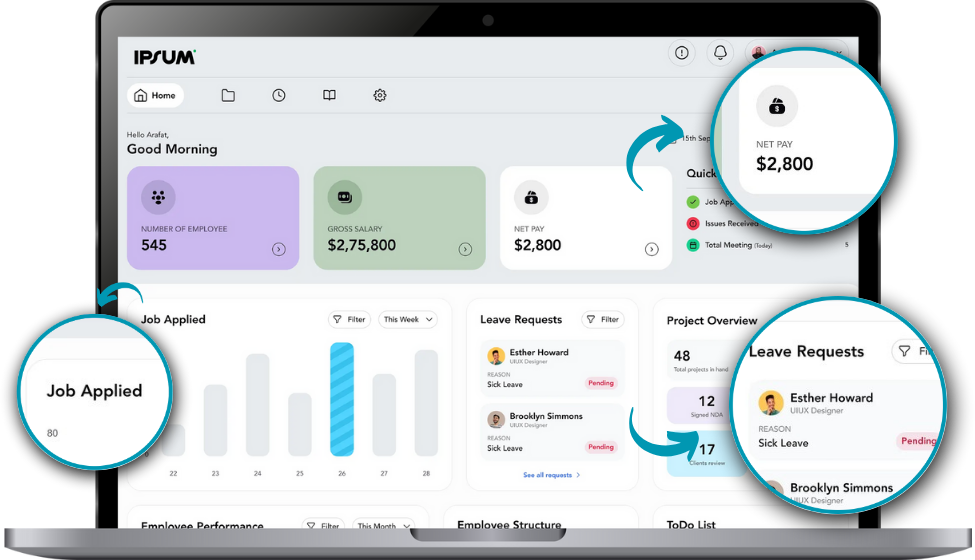Introduction to Web API Design
Building high-quality Web APIs is crucial for modern application development. Whether you're creating microservices, mobile backends, or integration points for third-party systems, following established best practices ensures your APIs are maintainable, scalable, and developer-friendly. In this comprehensive guide, we'll explore the essential practices that our team at iFlair Web Technologies follows when building enterprise-grade APIs with ASP.NET Core. These practices have been refined through hundreds of successful projects and are battle-tested in production environments.
RESTful API Design Principles
REST (Representational State Transfer) is an architectural style that provides guidelines for designing networked applications. Here are the core principles:
Stateless
Each request must contain all information needed to process it
Layered System
Architecture should be composed of hierarchical layers
Implementing these principles in ASP.NET Core ensures your APIs are predictable and easy to consume:
[ApiController]
[Route("api/[controller]")]
public class ProductsController : ControllerBase
{
private readonly IProductService _productService;
public ProductsController(IProductService productService)
{
_productService = productService;
}
[HttpGet]
public async Task<ActionResult<IEnumerable<Product>>> GetProducts(
[FromQuery] int page = 1,
[FromQuery] int pageSize = 10)
{
var products = await _productService.GetProductsAsync(page, pageSize);
return Ok(products);
}
}Resource Naming Conventions
Consistent and intuitive resource naming is essential for API usability. Follow these conventions:
Naming Best Practices
- Use nouns for resource names, not verbs
- Use plural nouns for collections (/api/products)
- Use kebab-case for multi-word resources (/api/product-categories)
- Keep URLs lowercase and descriptive
Good vs Bad Examples
Good Examples
GET /api/users
GET /api/users/123
GET /api/users/123/orders
POST /api/product-categories
Bad Examples
GET /api/getUsers
GET /api/user/123
GET /api/getUserOrders/123
POST /api/CreateProductCategory
HTTP Methods and Status Codes
Proper use of HTTP methods and status codes makes your API intuitive and predictable:
| HTTP Method | Purpose | Success Status | Example |
|---|---|---|---|
| GET | Retrieve resources | 200 OK |
|
| POST | Create new resource | 201 Created |
|
| PUT | Update entire resource | 200 OK / 204 No Content |
|
| PATCH | Partial update | 200 OK / 204 No Content |
|
| DELETE | Remove resource | 204 No Content |
|
Implementing Proper Status Codes
[HttpPost]
public async Task<ActionResult<Product>> CreateProduct([FromBody] CreateProductDto productDto)
{
if (!ModelState.IsValid)
return BadRequest(ModelState);
try
{
var product = await _productService.CreateProductAsync(productDto);
return CreatedAtAction(nameof(GetProduct), new { id = product.Id }, product);
}
catch (ValidationException ex)
{
return BadRequest(ex.Message);
}
catch (Exception)
{
return StatusCode(500, "An error occurred while creating the product");
}
}Security Best Practices
Security should be built into your API from the ground up. Here are essential security practices:
Authentication
JWT tokens, OAuth 2.0, API keys
Authorization
Role-based and policy-based access control
Encryption
HTTPS, data encryption at rest
JWT Authentication Implementation
// Startup.cs or Program.cs
services.AddAuthentication(JwtBearerDefaults.AuthenticationScheme)
.AddJwtBearer(options =>
{
options.TokenValidationParameters = new TokenValidationParameters
{
ValidateIssuer = true,
ValidateAudience = true,
ValidateIssuerSigningKey = true,
ValidIssuer = Configuration["Jwt:Issuer"],
ValidAudience = Configuration["Jwt:Audience"],
IssuerSigningKey = new SymmetricSecurityKey(
Encoding.UTF8.GetBytes(Configuration["Jwt:Key"]))
};
});
// Controller
[Authorize]
[HttpGet("secure-data")]
public async Task<ActionResult> GetSecureData()
{
var userId = User.FindFirst(ClaimTypes.NameIdentifier)?.Value;
// Your secure logic here
return Ok();
}Performance Optimization
Optimizing API performance is crucial for user experience and system scalability:
Performance Tips
- Implement response caching for frequently accessed data
- Use async/await patterns for I/O operations
- Implement pagination for large datasets
- Use compression for response data
- Optimize database queries with proper indexing
Caching Implementation
[HttpGet]
[ResponseCache(Duration = 300, VaryByQueryKeys = new[] { "page", "category" })]
public async Task<ActionResult<IEnumerable<Product>>> GetProducts(
[FromQuery] int page = 1,
[FromQuery] string category = null)
{
var cacheKey = $"products_{page}_{category}";
if (!_cache.TryGetValue(cacheKey, out var cachedProducts))
{
cachedProducts = await _productService.GetProductsAsync(page, category);
_cache.Set(cacheKey, cachedProducts, TimeSpan.FromMinutes(5));
}
return Ok(cachedProducts);
}Error Handling and Validation
Consistent error handling improves the developer experience and helps with debugging:
Global Exception Handler
public class GlobalExceptionMiddleware
{
private readonly RequestDelegate _next;
private readonly ILogger<GlobalExceptionMiddleware> _logger;
public GlobalExceptionMiddleware(RequestDelegate next, ILogger<GlobalExceptionMiddleware> logger)
{
_next = next;
_logger = logger;
}
public async Task InvokeAsync(HttpContext context)
{
try
{
await _next(context);
}
catch (Exception ex)
{
_logger.LogError(ex, "An unexpected error occurred");
await HandleExceptionAsync(context, ex);
}
}
private static async Task HandleExceptionAsync(HttpContext context, Exception exception)
{
var response = new
{
error = new
{
message = "An error occurred while processing your request",
details = exception.Message,
timestamp = DateTime.UtcNow
}
};
context.Response.ContentType = "application/json";
context.Response.StatusCode = 500;
await context.Response.WriteAsync(JsonSerializer.Serialize(response));
}
}Conclusion
Building high-quality Web APIs requires attention to design principles, security, performance, and maintainability. By following these best practices, you'll create APIs that are not only functional but also scalable and developer-friendly. At iFlair Web Technologies, we apply these practices in every project to ensure our clients receive robust, enterprise-grade solutions. Whether you're building a simple REST API or a complex microservices architecture, these principles will serve as a solid foundation for your development efforts.


